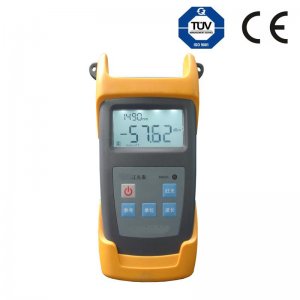Why A Good Fiber Optic Cleaver Helps Cut Out Costly Mistakes?
What Is Fiber Optic Cleaver? A cleave in an optical fiber is a deliberate, controlled break, intended to create a perfectly flat end face, perpendicular to the longitudinal axis of the fiber. A fiber optic cleaver is a tool that holds the fiber under low tension, scores the surface at the proper location, then applies greater tension until the fiber breaks. Usually, after the fiber has been scored, the technician will use a cleaver either bend or pull the fiber end, stressing the fiber. This stress will cause the fiber to break at the score mark, leaving a 90-degree flat end if all goes well. So the cleaver doesn’t cut the fiber. In fact, it just breaks the fiber at a specific length. Two Types of Fiber Optic Cleavers We know that the closer to 90 degrees the cleave is, the more success you will have with matching it to another cleaved fiber to be spliced or mated by a connector. So it’s important to use the proper tool with good technique to consistently achieve a 90-degr
